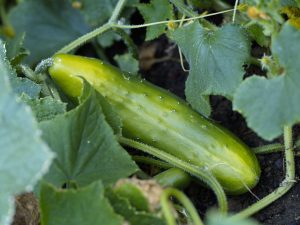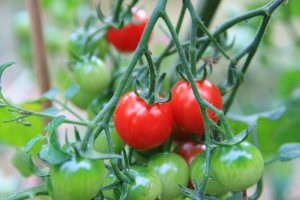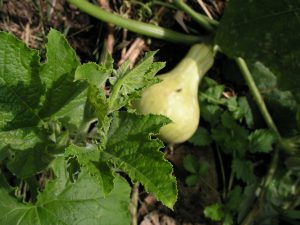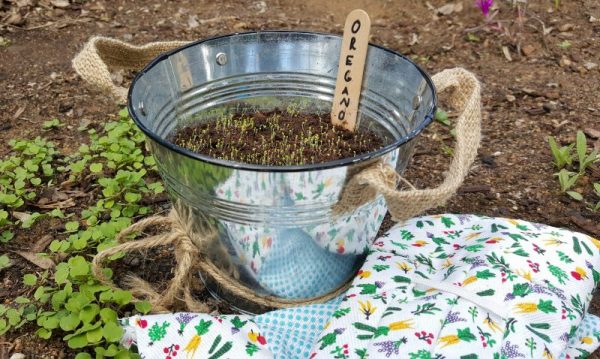Container Gardening
Not everyone has enough room on their property for a vegetable garden, and for some with limited mobility it may simply be too much work. For those who want to grow fresh produce without tearing up the yard or breaking a sweat, there’s container gardening!
When most of us think of plants growing in pots, we picture geraniums and petunias. But there are quite a few vegetables that perform wonderfully in containers. Tomatoes, peppers, eggplant and green onion are a few favorites. But pole beans, cucumbers, and squash can be successful in containers too, if given enough space and vertical support.
When it comes to choosing containers, you’ll want to pick bigger sizes at least 10 inches across and 12 inches deep. Smaller pots will dry out too quickly. Look for big flower pots, window boxes, half barrels or 5-gallon buckets. Just make sure it has drainage holes in the bottom.
You’ll want to place your containers in a sunny place, preferably with at least 6 hours of direct sun. Watch out for placing your pots on concrete patios in warmer climates, they may get too hot. The same thing can happen with black pots that absorb too much heat. In colder climates, you can use those to your advantage! Try placing your pots near a South-facing wall to get a head start on growing since that will give your plants a heat boost.

Cucumbers in a Container
What about those vining plants that need vertical space? Just place a tomato cage in the pot at planting time, and make sure the container is big and heavy enough to keep from tipping over.
For soil to fill your containers, you can purchase organic potting mix specially made for containers. Or try making your own with equal parts peat moss, potting soil, and perlite or sand. Fill your pots to within one or two inches from the top. Before planting, soak the potting mix with plenty of water and let it sit for a few hours to drain. After you’ve planted, top off the soil with a mulch of straw or compost to hold in moisture.
Here’s a handy chart with the best method for growing each kind of vegetable in a container:

Cherry Tomatoes
- Beets: Direct seed into a 2- to 5-gallon window box.
- Broccoli: One transplant per 5-gallon container.
- Cabbage: One transplant per 5-gallon container. Or with small varieties, one plant per gallon container.
- Carrots: Direct seed into a 2- to 5-gallon deep container. Thin to 3 inches apart.
- Cucumber: Two transplants per 5-gallon container. If using vining types, grow on trellis or cage.
- Eggplant: One transplant per 5-gallon container.
- Green Beans: Sow directly into a 5-gallon window box.
- Kohlrabi: Direct seed into a 5-gallon container. Thin to three plants.
- Lettuce: Direct seed or transplant into 1-gallon or larger container.
- Onion: Direct seed into 1-gallon or large container. Thin to 2 inches between plants.
- Peas: Direct seed into 5-gallon container. Grow taller varieties on a trellis.
- Pepper: Two transplants per 5-gallon container.
- Radishes: Direct seed into 2-gallon or larger container. Thin to 3 inches apart.
- Spinach: Direct seed into 1-gallon or larger container. Thin to 3 inches apart.
- Summer Squash: Direct seed or transplant, two plants per 5-gallon container.
- Swiss Chard: Transplant or direct seed four plants per 5-gallon container.
- Tomatoes: Transplant one plant per 5-gallon container.
- Winter Squash: Direct seed one plant per 5-gallon container.

Winter Squash
If you want to start your plants from seed yourself, take a look at our Germination Tips, and the best Lighting for Seedlings.
Copyright 2018 Everwilde Farms

